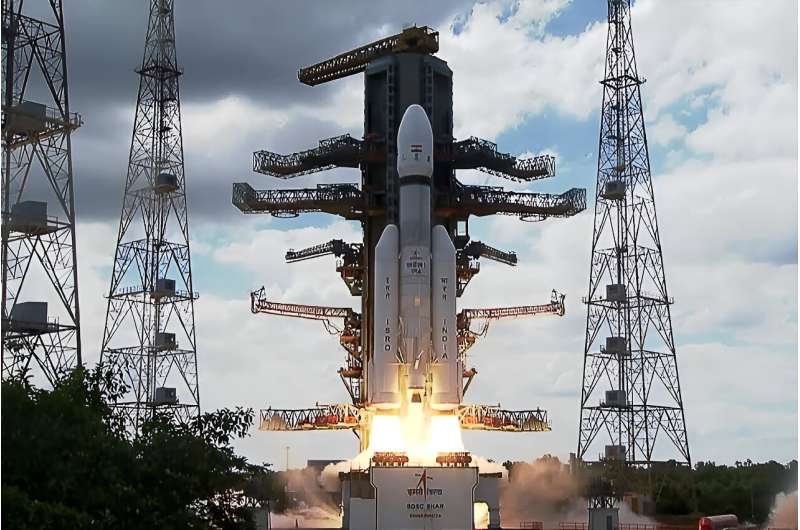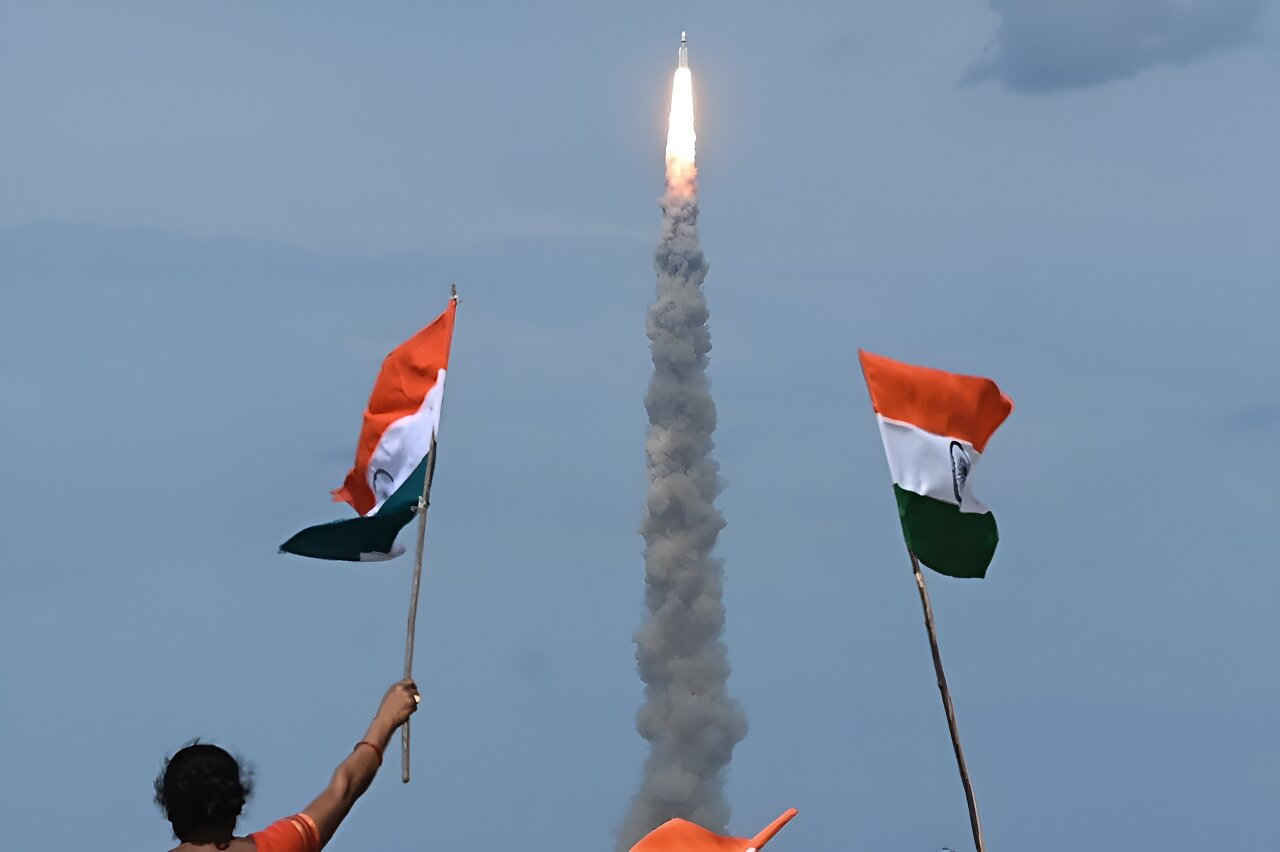India’s latest space mission has successfully entered the moon’s orbit on Saturday as it aims to achieve its second lunar landing. Despite its lower budget, India’s space program is rapidly closing in on the achievements of global space powers like Russia, the United States, and China.
Only Russia, the United States, and China have previously achieved a controlled landing on the lunar surface. The Indian Space Research Organisation (ISRO) confirmed that Chandrayaan-3, meaning “Mooncraft” in Sanskrit, has been “successfully inserted into the lunar orbit” after its launch three weeks ago. If the rest of the mission goes according to plan, the spacecraft will touch down near the moon’s little-explored south pole between August 23 and 24.
India’s previous attempt at a lunar landing ended in failure four years ago when ground control lost contact moments before landing. The new mission, Chandrayaan-3, developed by ISRO, includes a lander module, Vikram, and a rover, Pragyan. The mission, with a price tag of $74.6 million, showcases India’s frugal yet highly skilled approach to space engineering.

‘A moment of glory’
The Chandrayaan-3 spacecraft has taken longer to reach the moon compared to the manned Apollo missions of the 1960s and 1970s. The Indian rocket used is less powerful than the United States’ Saturn V, requiring elliptical orbits around the Earth to gain speed before embarking on a month-long lunar trajectory.
If the landing is successful, the rover will explore the nearby lunar area, collecting images for analysis. The rover has a mission life of one lunar day or 14 Earth days. ISRO chief S. Somanath has stated that lessons learned from the last failed mission were carefully studied and applied to this new mission.
India’s space program has grown significantly since its first lunar probe in 2008. It became the first Asian nation to orbit Mars in 2014 and successfully launched 104 satellites in a single mission three years later. The upcoming Gaganyaan (“Skycraft”) program aims to launch a manned mission into Earth’s orbit in the next year. Additionally, India is working to increase its share of the global commercial space market by offering low-cost private payloads.
© 2023 AFP
Citation:
Indian lunar landing mission enters moon’s orbit (2023, August 5)
retrieved 5 August 2023
from https://phys.org/news/2023-08-indian-lunar-mission-moon-orbit.html
This document is subject to copyright. Apart from any fair dealing for the purpose of private study or research, no
part may be reproduced without the written permission. The content is provided for information purposes only.
Denial of responsibility! SamacharCentrl is an automatic aggregator of Global media. In each content, the hyperlink to the primary source is specified. All trademarks belong to their rightful owners, and all materials to their authors. For any complaint, please reach us at – [email protected]. We will take necessary action within 24 hours.

Shambhu Kumar is a science communicator, making complex scientific topics accessible to all. His articles explore breakthroughs in various scientific disciplines, from space exploration to cutting-edge research.


